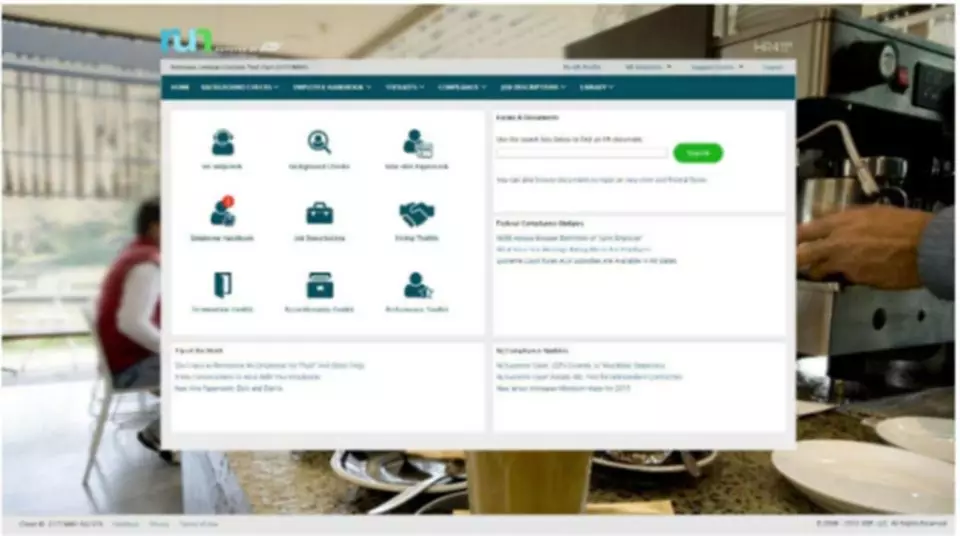Bookkeeping
Net Working Capital Formula: What It Is, How To Calculate It, and Examples
Content

All of the components of net working capital should be examined in detail and managed properly. While an excellent tool for determining how much wriggle room a company has financially, working capital has limitations. A capital-intensive firm such as a heavy machinery manufacturer is an excellent example. Negative working capital can be a good thing for businesses that have high inventory turnover. Working capital should be used in conjunction with other financial analysis formulas, not by itself.
- They look at their balance sheet and determine that they have total current assets of $85,000.
- It is a measure of a company’s liquidity and its ability to meet short-term obligations, as well as fund operations of the business.
- If a company borrows $50,000 and agrees to repay the loan in 90 days, the company’s working capital is unchanged.
- Conversely, a negative WC might not mean the company is in poor shape if it has access to large amounts of financing to meet short-term obligations such as a line of credit.
- Surprising again because Wal-Mart has generally decreased its spending on inventory, except for 2017.
- But these are only the outside inferences of the working capital.
- Failure to raise additional funds could result in severe liquidity issues or even bankruptcy.
Sometimes calculating just an increase or decrease in the working capital does not give a clear picture. In the above picture, the highlighted part represents the total current liabilities of Walmart Inc which are due within a one-year time duration. Here, the total current liabilities for the year 2020 and 2019 is $77,790 million and $77,477 million respectively. In the above picture, the highlighted part represents the total current assets of Walmart Inc. Here, by summing up all the current assets, we get the total current assets for the years 2020 and 2019 are $61,806 million and $61,897 million respectively. So, the changes in NWC are the difference between net working capital of two accounting periods .
Difference Between Net Working Capital and Liquidity
Below is the Snapshot of Colgate’s 2016 and 2015 balance sheets. Learn accounting, 3-statement modeling, valuation, and M&A and LBO modeling from the ground up with 10+ real-life case studies from around the world. Finally, the Change in Working as calculated manually on the Balance Sheet will rarely, if ever, match the figure reported by the company on its Cash Flow Statement. So, if the company somehow classifies these items within Working Capital, remove and re-classify them; change in net working capital they should never affect Cash Flow from Operations. The Change in WC has a mixed/neutral effect on Best Buy, reducing its Cash Flow in some years and increasing it in others, while it always increases Zendesk’s Cash Flow. The Change in Working Capital tells you if the company’s Cash Flow is likely to be greater than or less than the company’s Net Income, and how much of a difference there will be. As this article shows, working capital management is much simpler than it sounds.

Current LiabilitiesCurrent Liabilities are the payables which are likely to settled within twelve months of reporting. They’re usually salaries payable, expense payable, short term loans etc. Statement Of Cash FlowsA Statement of Cash Flow is an accounting document that tracks the incoming and outgoing cash and cash equivalents from a business. Stretching accounts payable impacts the change in working capital. If the company’s Inventory increases from $200 to $300, it needs to spend $100 of cash to buy that additional Inventory. The Change in Working Capital could positively or negatively affect a company’s valuation, depending on the company’s business model and market.
How To Create An Agile Finance Function
The company has enough cash to repay its dues, while also focusing on improving the https://www.bookstime.com/ business. Inventory performance is a major factor that impacts working capital.
Capital, like data, drives the day-to-day operations of businesses around the world. Having a strong enough cash flow to cover your debts, keep your business humming, and invest in innovation requires careful financial management. There are some situations or types of companies in which you may face more short-term liabilities than you have short-term assets and it could still work in your favor . To be considered “current”, these liabilities and assets must be expected to be paid or accessible within one year . Calculating working capital is important for businesses that need to know how much working capital they are short or over.
How to Calculate Current Liabilities
While negative balance of changes in NWC indicates the cash outflow. Negative balance in changes of NWC is good because it indicates the cash inflow or the capability of the compnay to generate cash quickly. How to calculate the change in net working capital is pretty simple; it requires only four steps to follow. Let’s take an example to understand the calculation of Change in Net Working Capital formula in a better manner. Calculate the change in net working capital by taking a difference of the calculated working capitals.
- The above graphic shows a balance sheet with $600,000 of current assets and $350,000 of current liabilities.
- All of this can ultimately lead to a lower corporate credit rating and less investor interest.
- If the difference poses a positive value, it means the firm is likely to fulfill the short-term obligations.
- So, in the table, you can see the calculated working capital for the years 2020 and 2019.
In fact, a firm’s balance sheet contains various other items in current assets and current liabilities. When we originally wrote this article, Microsoft’s working capital fluctuated a lot, with current assets generally increasing faster than current liabilities . The last three years looks much better, however, with current liabilities increasing faster than current assets.
This makes it unnecessary to keep large amounts of net working capital on hand to deal with a financial crisis. Examples of these types of businesses are grocery stores and discount retailers. In general, they raise money every time they open their doors by selling inventory. A company in good financial shape should have sufficient working capital on hand to pay its bills for one year. You can tell if a company has the resources necessary to expand internally or if it will need to turn to a bank or investors to raise additional funds by studying its working capital. You create accounts receivable when you sell to customers and collect the cash later.
Suominen Corporation’s Interim Report for January – GlobeNewswire
Suominen Corporation’s Interim Report for January.
Posted: Wed, 26 Oct 2022 06:30:00 GMT [source]
All companies strive to shorten their business cycle by collecting their receivables sooner or extending their accounts payable. This ebb and flow of their business cycle give them more “cash” to operate their company. If a company is growing quickly, this calls for large changes in working capital from month to month, as the business must invest in more and more accounts receivable and inventory. The problem can be reduced with a corresponding reduction in the rate of growth. Net working capital, for some, is too simple and doesn’t always illustrate the true financial status of the company. To calculate NWC, all we have to do is divide current assets by current liabilities. Net Zero Working Capital indicates your company’s liquidity is sufficient to meet its obligations but doesn’t have the cash flow for investment, expansion, etc.
Accounting Topics
The amount of working capital a company has will typically depend on its industry. Some sectors that have longer production cycles may require higher working capital needs as they don’t have the quick inventory turnover to generate cash on demand. Alternatively, retail companies that interact with thousands of customers a day can often raise short-term funds much faster and require lower working capital requirements. So, the first step for calculating the changes in NWC is the calculation of the Current assets of the current year and previous year . Below is a short video explaining how the operating activities of a business impact the working capital accounts, which are then used to determine a company’s NWC.
The best rule of thumb is tofollow what the company does in its financial statements rather than trying to come up with your own definitions. That explains why the Change in Working Capital has a negative sign when Working Capital increases, while it has a positive sign when Working Capital decreases. Your company’s working capital is the very reason you are still in business today. You’re likely to pay more in interest over time, but your liabilities will be smaller from month to month. It may be tempting to buy in bulk to save money, but anything sitting in your warehouse is only costing you money.
Here, Current assets include Accounts receivables, Marketable securities, prepaid expenses, cash, and stock. You can easily find these items from the balance sheet of the company. Whereas Current Liabilities include Accounts payables, short-term debts, outstanding expenses, and notes payables. Just deduct Cash and Debt from Current assets and current liabilities. For eg, assume a company has a COA of $70,000 and COL of $35,000.



